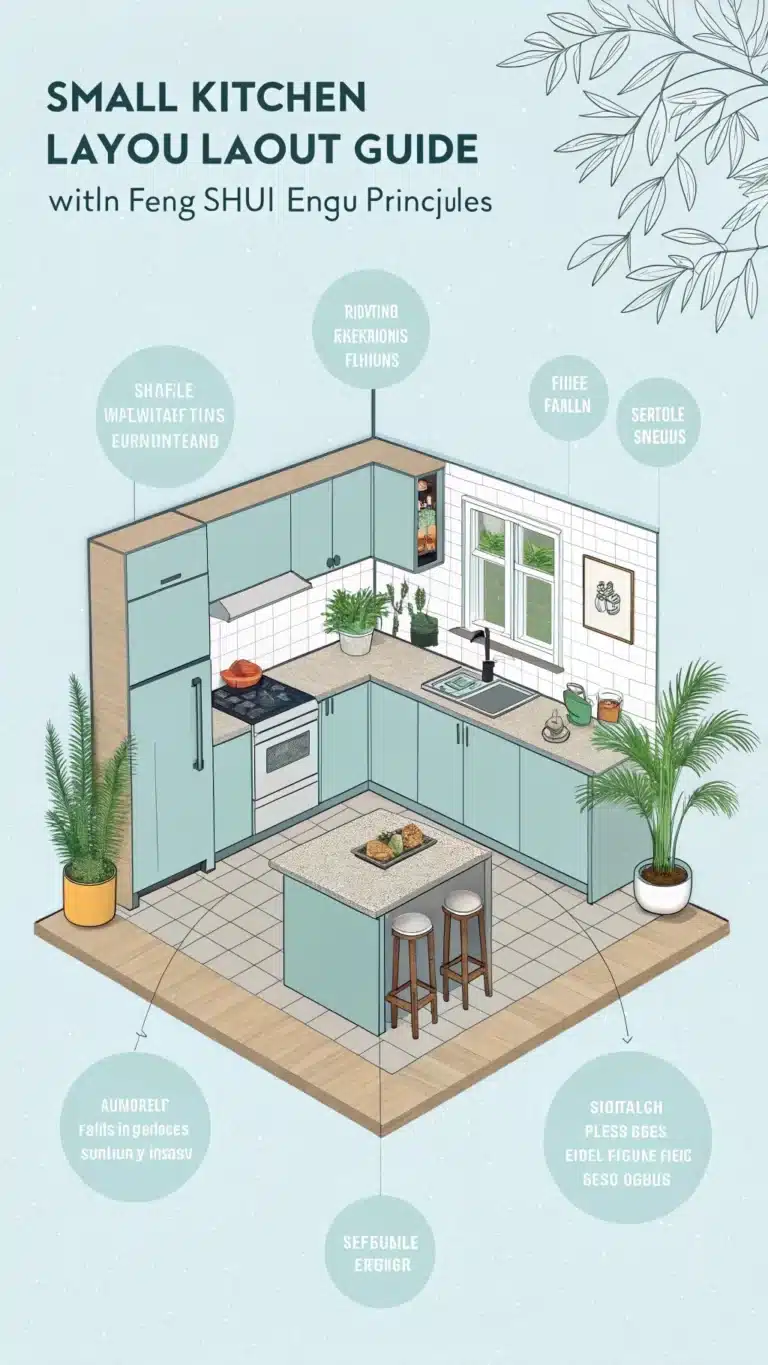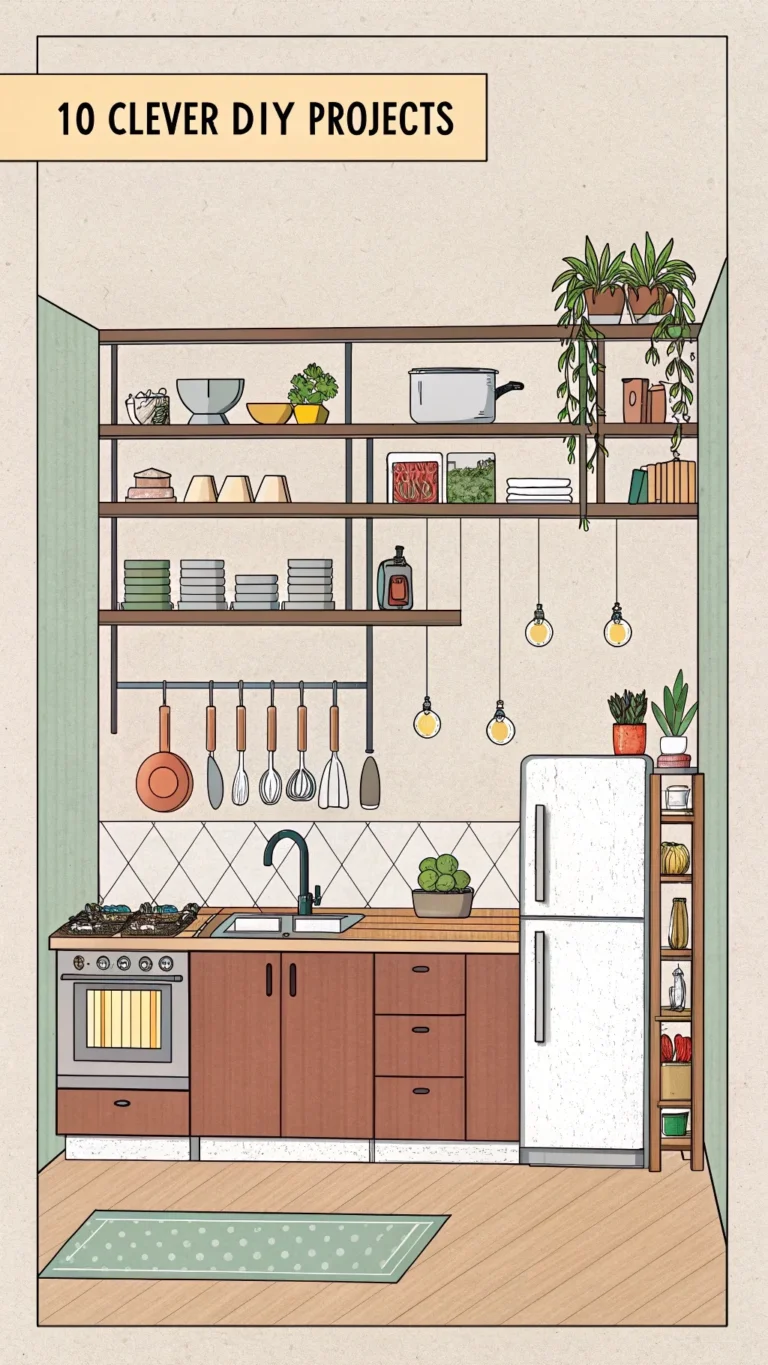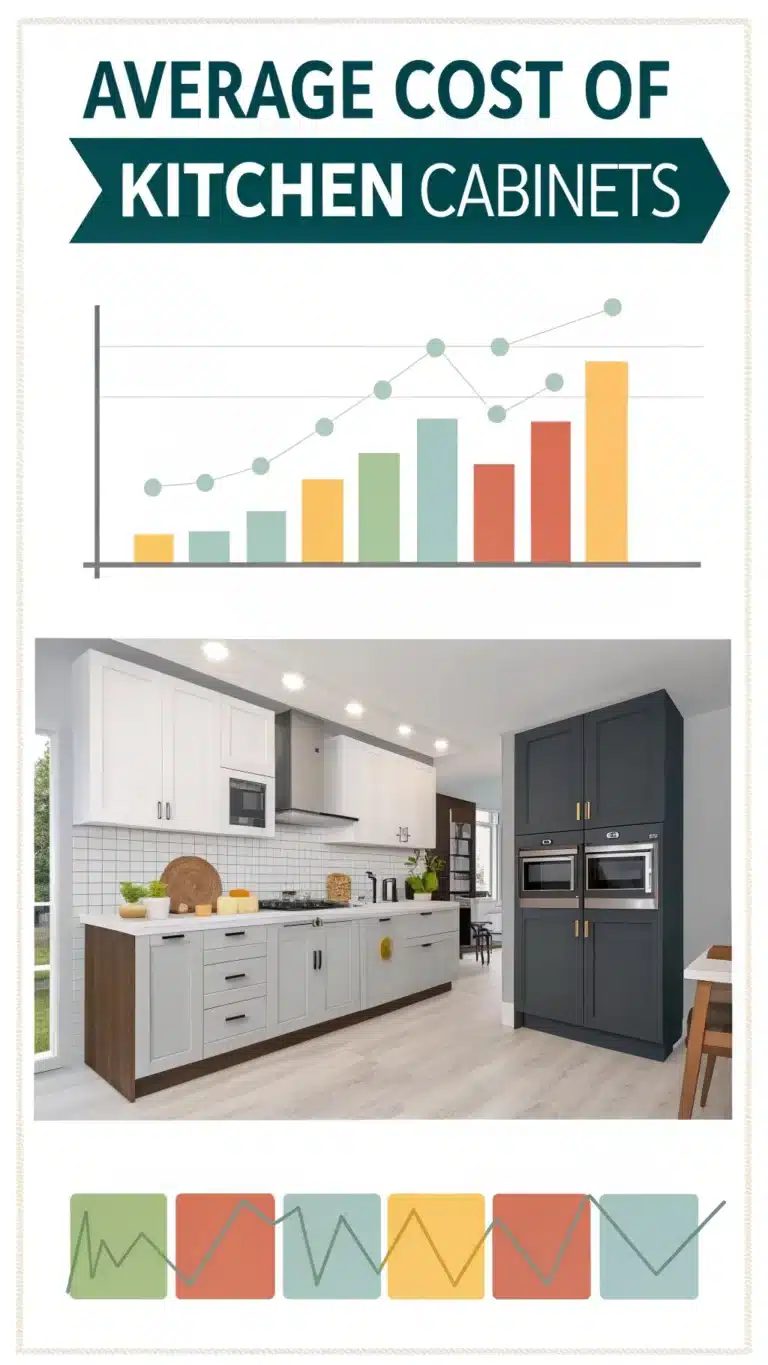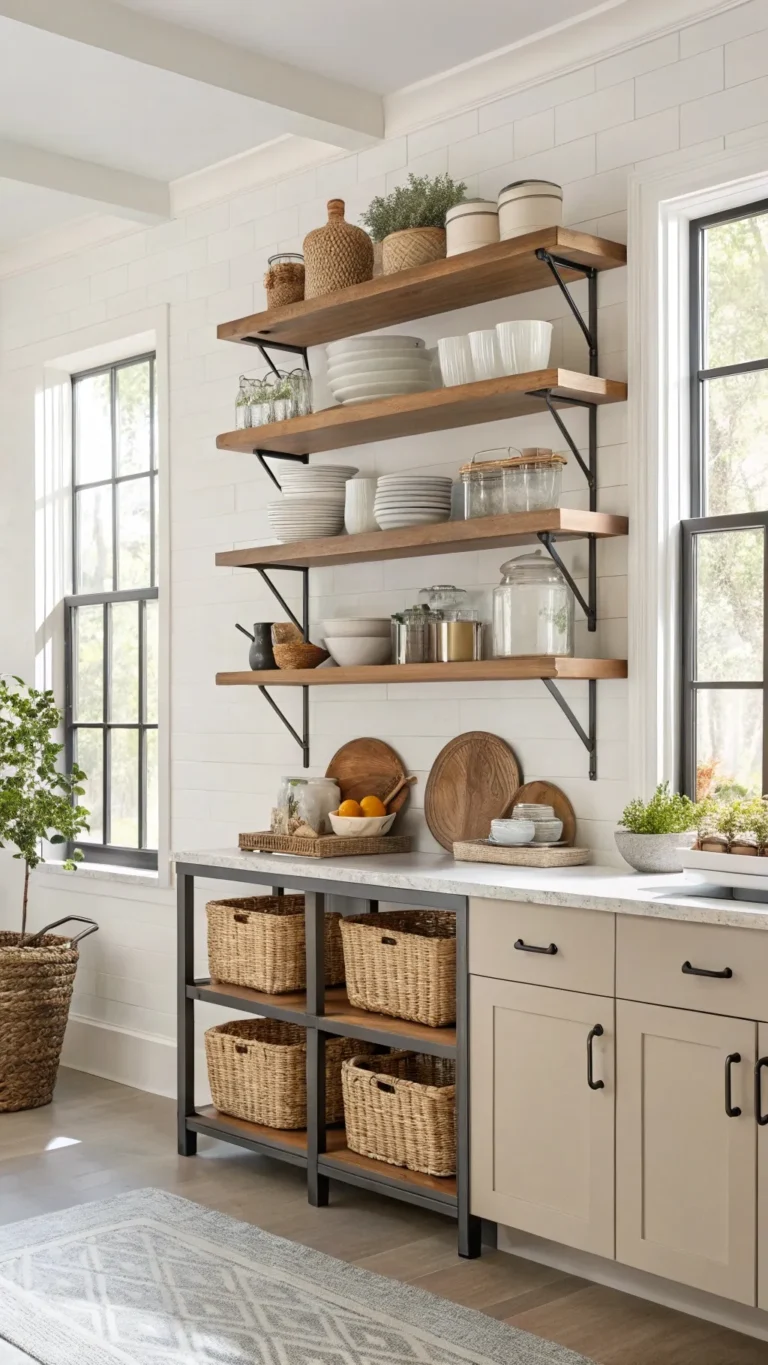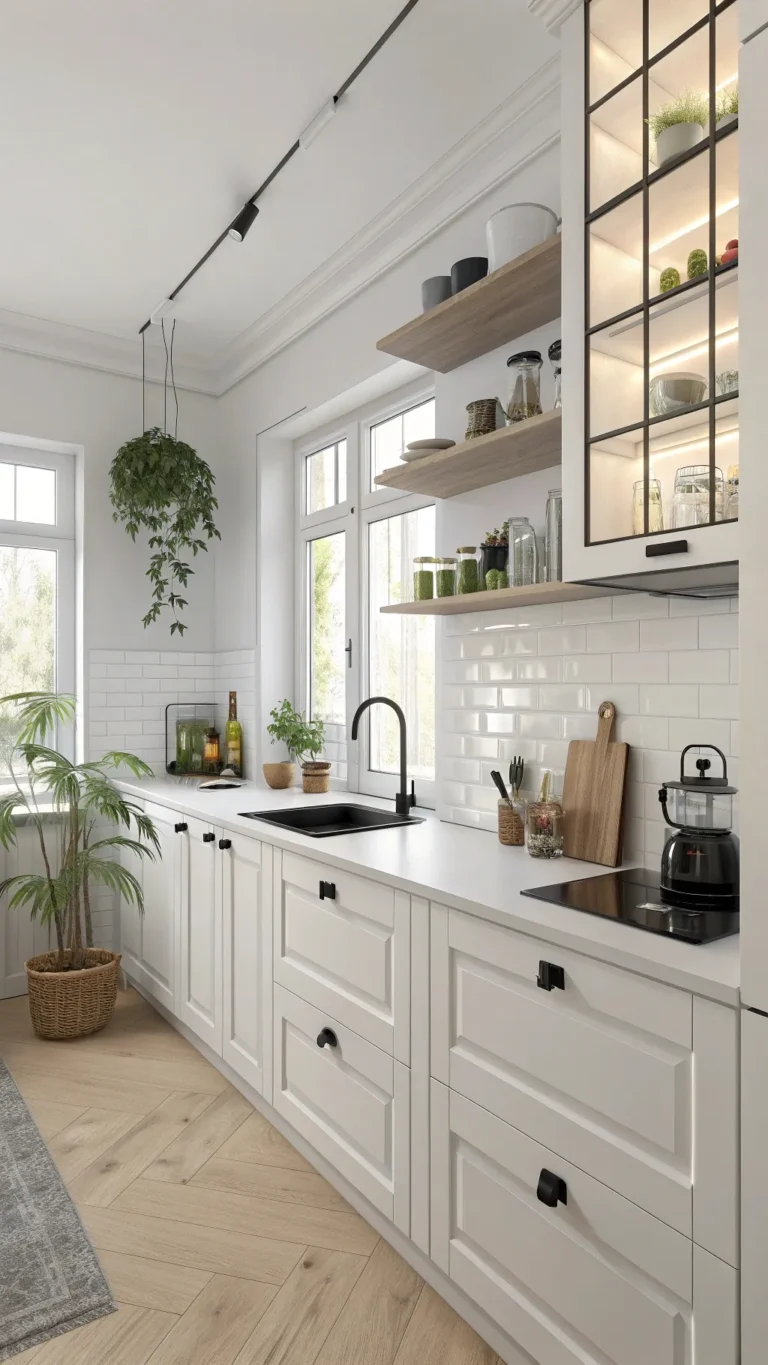Small kitchens bring unique challenges. Limited space often means sacrificing style or sustainability. The desire to live greener grows every year. Combining smart design with eco-friendly habits helps us save space and protect the planet. This article shares sustainable small kitchen ideas that anyone can use in 2025. These tips suit homeowners, renters, and DIY enthusiasts alike. Expect advice on materials, appliances, smart tech, storage, and waste reduction. Simple changes lead to big eco wins. Read on and find ideas you can start today.
Building a Green Foundation: Sustainable Materials & Design
Choosing the right materials sets the tone for an eco-friendly kitchen. Durable, recycled, or natural resources reduce your impact. Small kitchens especially benefit from smart designs that maximize space and beauty.
Idea 1: Opt for Recycled or Reclaimed Countertops
Reclaimed surfaces combine style and sustainability. Here are some choices:
- Recycled glass: Made from crushed bottles, offers sleek color options. Scratches less but may chip.
- Paper composite: Compressed recycled paper with resin. Feels warm and is lightweight.
- Reclaimed wood: Adds warmth but needs sealing against moisture.
- Bamboo: Fast-growing, renewable grass. Durable but can be pricier.
| Material | Cost Range | Durability | Eco Impact |
|---|---|---|---|
| Recycled Glass | Moderate-High | Medium | High – uses waste materials |
| Paper Composite | Moderate | High | High – recycled paper base |
| Reclaimed Wood | Variable | Medium | High – reuses old timber |
| Bamboo | Moderate-High | High | High – rapidly renewable |
Look for local suppliers. Transportation impacts the carbon footprint. A friend told me about a reclaimed wood shop nearby that saved her $100 and kept wood out of landfills. Worth exploring!
Idea 2: Choose Eco-Friendly Cabinetry
Cabinets cover a big part of kitchens. Greener options include:
- Bamboo cabinets: Stylish, sustainable, and strong.
- Reclaimed wood: Adds character and reduces logging.
- FSC-certified wood: Forest Stewardship Council ensures responsible forestry.
- Recycled materials: Some cabinets use recycled plastics or composites.
Pick cabinets finished with low-VOC (volatile organic compound) paints or sealants. These reduce harmful fumes. Look for Greenguard certification that guarantees better air quality.
Maximize vertical space with tall cabinets or shelves. That way, small kitchens can store more without clutter. For paint, try “Choosing Low-VOC Paints for Your Home” among our guides to keep walls healthy.
Idea 3: Sustainable Flooring Options for High-Traffic Small Spaces
Floors last for years but need to be eco-friendly and tough. Good options are:
- Bamboo: Hardwearing and renewable.
- Cork: Soft underfoot, natural springiness, anti-microbial.
- Reclaimed wood: Adds warmth, careful with moisture.
- Marmoleum: Natural linoleum made from linseed oil, wood flour, and jute.
Think about water resistance. Cork and Marmoleum handle spills better than wood. Small kitchens face spills often, so pick wisely. Also, consider lifecycle costs—not just purchase price but maintenance and durability.
An image showing samples of these materials side by side helps to visualize how they look and feel.
Energy & Water Efficiency: Smart Appliances & Fixtures
Saving energy and water reduces bills and carbon emissions. Kitchens consume a lot of both. Smart choices stretch resources and make life easier.
Idea 4: Invest in Energy-Efficient Appliances (Even Small Ones)
Energy Star rated appliances use less electricity. For small kitchens, go for:
- Compact refrigerators with high efficiency.
- Slim dishwashers, if space permits.
- Induction cooktops, which heat faster and waste less energy.
An Energy Star fridge uses about 15% less energy than a standard one. Using online calculators can help you see how much money and energy you save over time.
Check the Energy Star website for top-rated small kitchen appliances. They list products with best efficiency.
Idea 5: Water-Saving Fixtures & Habits
Water-saving taps and habits make a big difference.
- Low-flow faucets and aerators cut water use without loss of pressure.
- Instant hot water taps reduce water wasted waiting for warmth.
- Using dishwashers efficiently uses less water than handwashing, if fully loaded.
Installing an aerator costs little and requires just a screwdriver. Follow a DIY guide like “Installing a Low-Flow Faucet Aerator” to add one yourself.
An infographic showing typical water savings using low-flow fixtures makes the impact clear.
Less Waste, More Space: Organization & Zero-Waste Habits
Small kitchens need smart storage and green habits. Less clutter, less waste, more freedom.
Idea 6: Implement Effective Composting & Recycling Systems
Even small spaces can compost. Try:
- Countertop compost bins for food scraps.
- Under-sink compost systems that seal odors.
- Worm farms if you have outdoor space.
Find local compost or recycling programs to keep waste out of landfills. Good storage prevents food spoilage and waste.
Start by placing a small bin on your counter. It makes composting easy and visible. A step-by-step How-To Schema for setting one up would guide beginners well.
Idea 7: Smart Storage for Bulk Buying & Reduced Packaging
Bulk buying reduces packaging waste but needs smart storage.
- Use shelves, racks, and pegboards to go vertical.
- Store grains, beans, and spices in reusable glass jars or stainless steel containers.
- Organize pantries so food stays visible and does not expire unnoticed.
Try swapping one grocery item each week to bulk buying. This gradual approach prevents overwhelm.
List essentials like stackable jars, cloth bags, and airtight containers. Pictures of well-organized vertical storage inspire action.
Idea 8: Say No to Single-Use Plastics & Paper
Avoid disposable bags, wraps, and napkins by choosing:
- Reusable cloth bags for groceries.
- Beeswax wraps instead of plastic.
- Cloth napkins instead of paper.
- Silicone lids over cling film.
Keep reusable bags near the door or in your daily handbag. Making this visible helps build the habit.
For new ideas, explore our “Beginner’s Guide to a Zero-Waste Lifestyle.”
Greener Living: Smart Tech & Sustainable Swaps
Smart tools and small swaps increase convenience and reduce waste.
Idea 9: Harness Smart Technology for Efficiency
Smart plugs switch off appliances remotely, preventing standby power waste. Smart LED lights with motion sensors save electricity. Use apps to track energy and water consumption.
Small smart gadgets fit well in tight kitchens. Examples include efficient induction cookers and smart scales. The latter helps measure portions and cut food waste.
Start small with smart plugs on devices used daily.
Idea 10: Make Sustainable Swaps for Everyday Items
Switch to non-toxic, reusable cleaning products.
- Use reusable cloths instead of paper towels.
- Choose eco-friendly dish soap bars or liquids.
- Use reusable coffee pods and tea infusers.
Replace one cleaning product with a green alternative this week. You’ll reduce plastic waste and harmful chemicals.
Check out our review of “Best Eco-Friendly Cleaning Products for the Kitchen” for ideas.
Visuals showing before-and-after swaps highlight easy changes.
Frequently Asked Questions (FAQs)
How much does it cost to make a small kitchen eco-friendly?
Costs vary. Small changes like switching to low-flow faucets or reusable containers cost under $50. A full remodel with eco materials might reach thousands. Energy-efficient appliances save money long term. Start with affordable habits and upgrades.
What are the easiest eco-friendly changes a renter can make in a small kitchen?
Focus on habits and small items. Use reusable bags, eco-friendly cleaning products, compost scraps in a portable bin, buy bulk foods in jars. Renter-friendly fixtures like faucet aerators often install without damage.
Are sustainable kitchen materials less durable?
Not always. Some recycled materials perform as well as traditional ones. Bamboo and reclaimed wood last long with care. Proper maintenance extends life. Look for warranties and certifications.
How can I maximize storage in a tiny eco-friendly kitchen?
Use vertical shelves, pegboards, and hooks. Stack containers. Declutter regularly to avoid waste. Use clear jars for easy visibility.
What’s the best way to reduce food waste in a small kitchen?
Plan meals ahead. Store leftovers properly. Compost scraps. Use smart scales to measure portions. Buy only what you need.
Conclusion
Choosing sustainable small kitchen ideas makes your home greener and smarter. Materials like reclaimed wood and bamboo lay a green foundation. Energy-efficient appliances and water-saving fixtures cut utility bills and conserve resources. Zero-waste habits, smart storage, and composting reduce waste and clutter. New smart gadgets add convenience and control. These tips work for any budget or kitchen size. Start small and grow greener every day. Share your own eco-friendly kitchen ideas with us in the comments. Together, we build better spaces for the future.
Let’s welcome 2025 with a small kitchen that’s kind to our planet.

